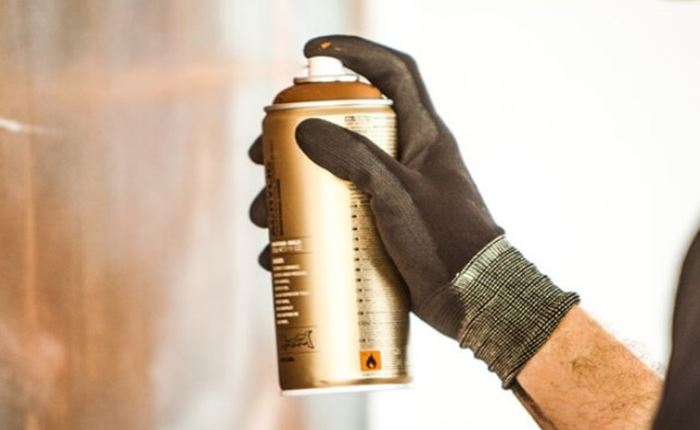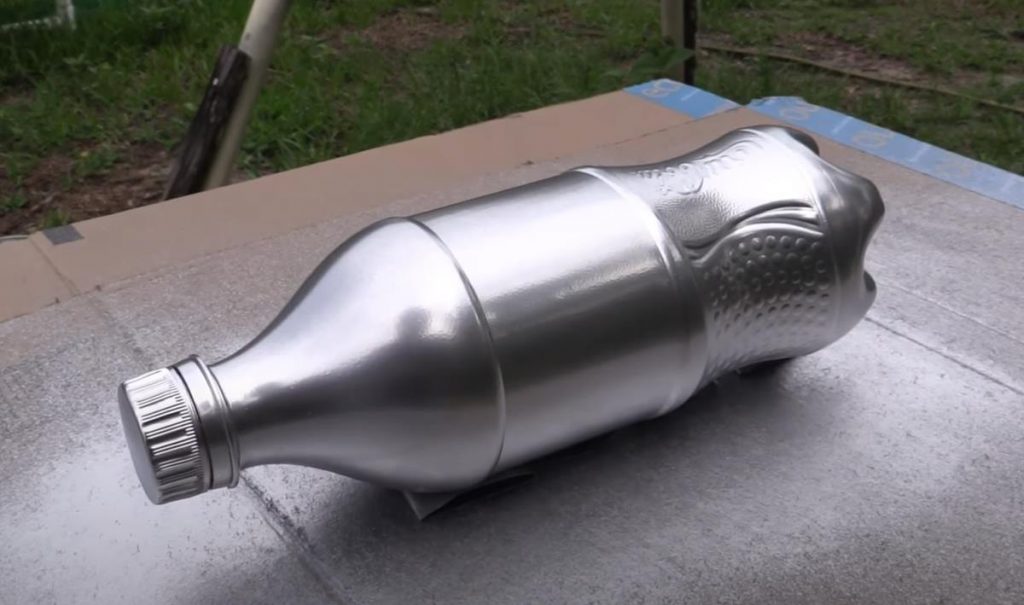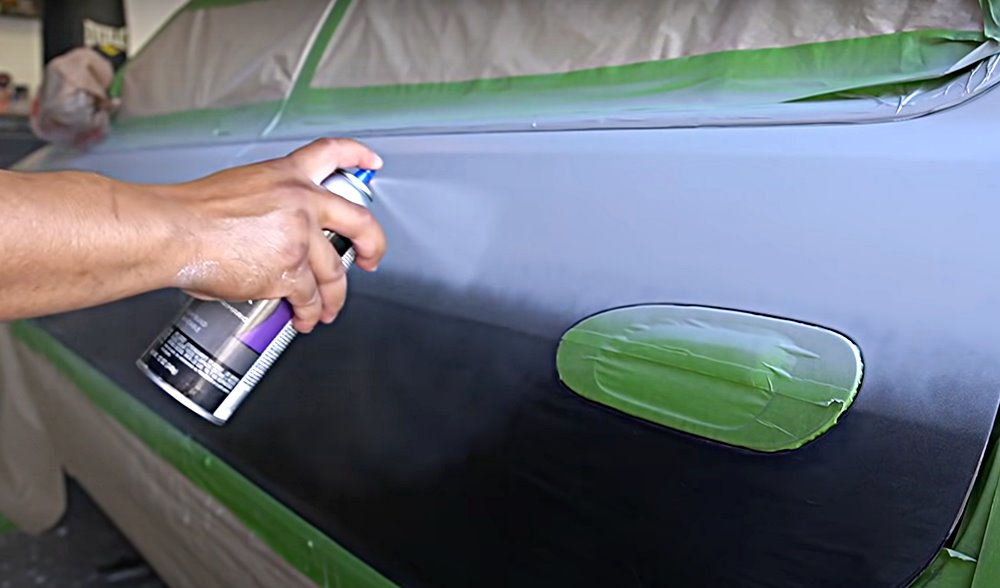Do you love how spray paint goes on so smoothly, but hate how it gets sticky? You are not alone! Spray paints can be frustrating because they work so well for a little while and then turn into one big mess.
But don’t worry there are ways to make your spray paint not sticky! Here are a few tricks that will keep the paint from getting gooey after just a few coats.

Why is my paint sticky/tacky?
If the paint is too sticky, it can be caused by over-application or use of more than what was required on your surface.
Pad drying time may also cause this problem as well if you have used poor quality and waited too long before applying multiple coats.
Tacky days are common with latex paints when applied in cold weather environments which makes them hard to remove later even after waiting for proper drying periods between each coating. Tackiness happens most often when there is no extra virgin rubbing alcohol nearby because their flash points exceed 200 degrees Fahrenheit (93 degrees Celsius).
Tips to Keep Spray Paint from Getting Sticky
Here are a few tips to make your Spray Paint Not Sticky:
1. Choose Warmer Place
Spray your paint in a warmer room or simply cover up any areas that are too sticky with masking tape so they don’t stick before completely drying. Another option is to spray at night when it is cooler because the spray will dry faster without humidity interfering with how fast it can be removed.
2. Use Baby Powder
Add a thin layer of baby powder between coats and let the paint completely dry before reapplying another wet coat over the top which separates them from one another.
4. Proper Apply
Remember, how you apply this product matters as well! If you slap on too many coats or apply it too thick, your paint will get sticky. Make sure to avoid these mistakes so you don’t have to deal with this frustration again!
5. Multiple Layers
If none of these tricks work to make spray paint not stick then try getting a can that is made for multiple layers like the Rust-Oleum Painter’s Touch Ulta with the built-in Nozzle Guard that saves you time!
6. Use Nozzle Guard
The Nozzle guard prevents the paint from clogging your nozzle by using a patented secondary valve to spray only when the can is inverted, otherwise, it automatically shuts off.
7. Use Drop Cloth Or Plastic sheet
When spraying latex paint always use an extra-large drop cloth or plastic sheeting on surfaces that can be ruined and never use glossy surfaces like tiles or metal which will look tacky.
8. Use Painter’s Tap
If you want to protect your furniture from getting damaged, try using a low-tack painter’s tape that is removable with no residue left behind after taping off the area where you are working on.
9. Use Clear Coat or Sealer
When you are finished with the project, be sure to pick up a can of clear coat or sealer that will prevent any future damage for how long this product lasts before needing to be reapplied again!
How to fix sticky spray paint on rubber?
Fixing sticky spray paint on rubber can be challenging, as rubber surfaces are not typically designed to be painted. However, there are a few things you can try to address the issue:
Sand the Rubber Surface: If the rubber surface is not too flexible, you can try sanding it with fine-grit sandpaper to create a slightly rough texture. This can help the paint adhere better to the rubber and dry faster. However, be careful not to sand too hard or too deep, as this can damage the rubber surface.
Apply a Primer: Applying a primer designed for use on rubber surfaces can help the paint adhere better and dry faster. You can find rubber primers at most hardware or paint stores. Make sure to follow the primer’s instructions carefully, and allow it to dry completely before applying the paint.
Try a Different Type of Spray Paint: Some spray paints are designed specifically for use on flexible surfaces, such as rubber or vinyl. Look for spray paint labeled “flexible” or “vinyl and fabric,” as these types of paint contain special ingredients that can help them adhere better to rubber and other flexible surfaces.
Use a Clear Coat: Applying a clear coat of varnish or sealant over the sticky paint can help protect it and prevent further stickiness. Make sure to use a clear coat designed for use on rubber surfaces, and allow it to dry completely before using the painted object.
Strip and Start Over: If none of these methods work, it may be necessary to strip the old paint and start over. This can be a time-consuming and messy process, but it’s the only way to ensure a clean and even finish on a rubber surface.
Keep in mind that fixing sticky spray paint on rubber can be challenging, and there’s always a risk that the paint may continue to remain sticky even after attempting these fixes. If the object is something that you cannot afford to ruin, it may be best to avoid spray painting it all together and instead look for other ways to update or decorate the object.
How to fix sticky spray paint on wood?
Sticky spray paint on wood can be a frustrating problem to deal with, but there are several steps you can take to fix it. Here’s how:
Sand the Surface: First, you’ll need to sand the sticky paint off the wood. Use fine-grit sandpaper and sand gently until the paint is removed. Be sure to wear a dust mask and protective eyewear while sanding, and work in a well-ventilated area.
Clean the Surface: Once you’ve sanded off the sticky paint, use a clean cloth and some warm, soapy water to clean the surface. Be sure to remove all traces of dust and debris, and allow the surface to dry completely before proceeding.
Apply a Primer: Applying a primer to the sanded and cleaned surface can help the paint adhere better and dry faster. Choose a primer that is suitable for use on wood surfaces and follow the manufacturer’s instructions carefully.
Repaint the Surface: Once the primer has dried, you can repaint the surface with a fresh coat of spray paint. Be sure to use a paint that is suitable for use on wood surfaces, and follow the manufacturer’s instructions carefully. Apply the paint in thin, even coats, and allow each coat to dry completely before applying the next.
Use a Clear Coat: After the paint has dried completely, you can apply a clear coat of varnish or sealant to protect the surface and prevent further stickiness. Make sure to use a clear coat that is suitable for use on wood surfaces, and follow the manufacturer’s instructions carefully.
If the above steps do not work, it may be necessary to strip the old paint off the wood and start over. This can be a time-consuming and messy process, but it’s the only way to ensure a clean and even finish on the wood surface.
How to fix sticky spray paint on metal?
Sticky spray paint on metal surfaces can be a common problem, but luckily there are a few steps you can take to fix it. Here’s how:
Sand the Surface: First, you’ll need to sand the sticky paint off the metal. Use fine-grit sandpaper and sand gently until the paint is removed. Be sure to wear a dust mask and protective eyewear while sanding, and work in a well-ventilated area.
Clean the Surface: Once you’ve sanded off the sticky paint, use a clean cloth and some warm, soapy water to clean the surface. Be sure to remove all traces of dust and debris, and allow the surface to dry completely before proceeding.
Apply a Primer: Applying a primer to the sanded and cleaned surface can help the paint adhere better and dry faster. Choose a primer that is suitable for use on metal surfaces and follow the manufacturer’s instructions carefully.
Repaint the Surface: Once the primer has dried, you can repaint the surface with a fresh coat of spray paint. Be sure to use a paint that is suitable for use on metal surfaces, and follow the manufacturer’s instructions carefully. Apply the paint in thin, even coats, and allow each coat to dry completely before applying the next.
Use a Clear Coat: After the paint has dried completely, you can apply a clear coat of varnish or sealant to protect the surface and prevent further stickiness. Make sure to use a clear coat that is suitable for use on metal surfaces, and follow the manufacturer’s instructions carefully.
If the above steps do not work, it may be necessary to strip the old paint off the metal and start over. This can be a time-consuming and messy process, but it’s the only way to ensure a clean and even finish on the metal surface.
Read How Long Does It Take spray Paint To Dry
How to fix if spray paint still tacky after 24 hours
If your spray paint is still tacky after 24 hours, it’s likely due to one of two reasons: either you applied the paint too thickly or the humidity level was too high when you painted. Here are some steps you can take to fix the problem:
Increase Ventilation: Increase ventilation in the area where the item was painted. Open doors and windows to increase airflow and allow the paint to dry faster. Use fans to increase air circulation and reduce humidity.
Sand the Surface: If the paint is still tacky, gently sand the surface with a fine-grit sandpaper. Be careful not to sand too hard or you could remove the paint altogether. Use a damp cloth to remove any dust from the surface once you’ve sanded it.
Wait and Recheck: If the paint still feels tacky, it’s best to wait for another 24-48 hours and recheck. Sometimes, spray paint takes longer to cure, especially in high humidity or cold weather conditions.
Apply Heat: Applying heat to the painted surface can speed up the drying process. You can use a hairdryer or heat gun to gently warm up the surface. Be careful not to overheat the paint, as this can cause it to bubble or crack.
Repaint: If all else fails, you may need to repaint the surface. Before repainting, make sure the surface is completely dry and sanded. Use thin, even coats of paint, and allow each coat to dry completely before applying the next.
Conclusion
Spray painting can be a great way to add color and personality to any project. However, it’s important to understand the risks of spray paint getting sticky and take steps to prevent it. By following the tips in this article and using the right products, you can ensure a successful and long-lasting paint job.
And if your project does end up with sticky paint, don’t panic; there are several fixes you can try to salvage your work. With a little patience and experimentation, you’ll be on your way to a beautiful and non-sticky finish in no time.


